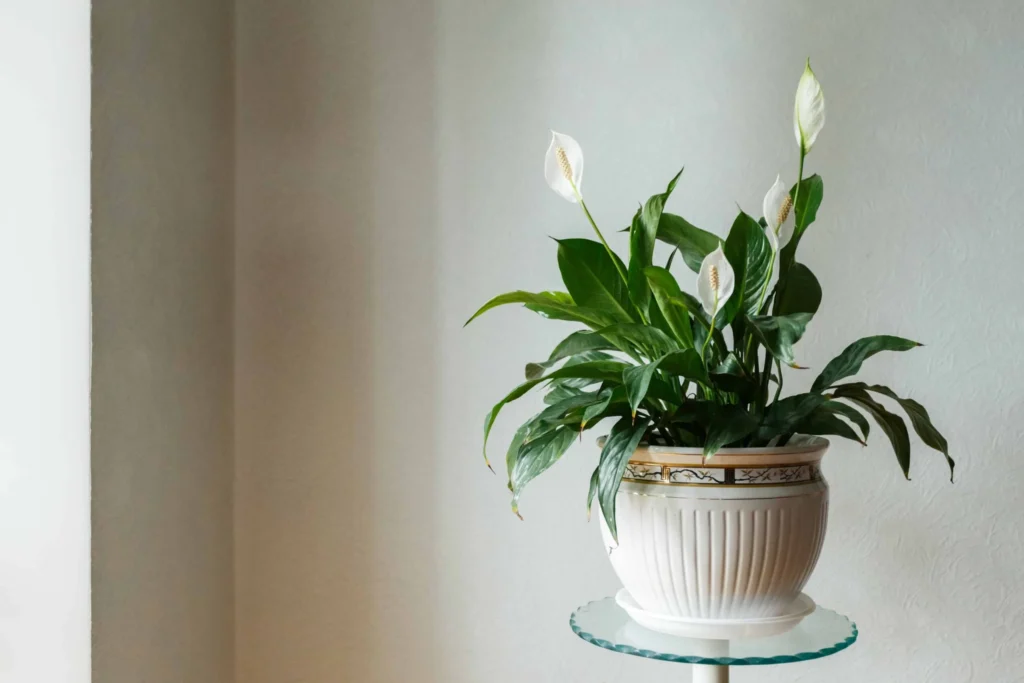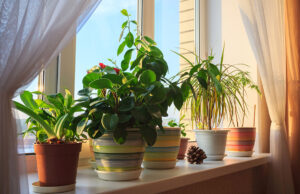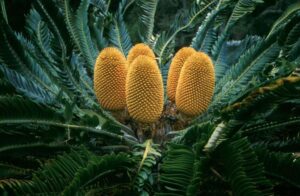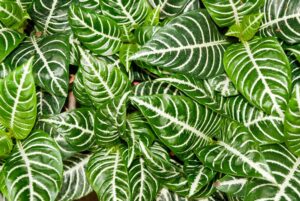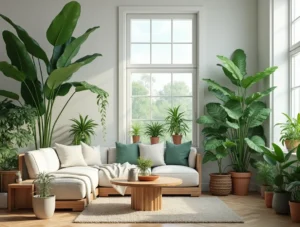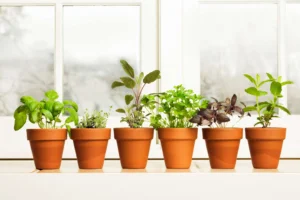Are you struggling to find the perfect greenery for those dim corners of your home? Don’t worry—we’ve got you covered! In this article, we’ll dive into the fascinating world of low-light indoor plants, ideal for brightening up spots where sunlight just doesn’t reach.
Whether your home lacks abundant sunlight or you simply want to add some nature to your space, these 16 stunning houseplants will thrive in low-light conditions, bringing a touch of nature into your home.
What are low-light indoor plants?
Low-light indoor plants are those specially adapted to thrive in environments with minimal sunlight. While all plants need some light to grow, a variety of vines, ferns, and foliage plants can flourish even in the dimmer areas of your home. These plants are perfect for anyone looking to liven up a room that doesn’t receive a lot of natural light, making them ideal for apartments, offices, or any space with limited sunlight.
On This Page
Top 16 Low-Light Indoor Plants
Arrowhead Vine
Starting off the list is the Arrowhead Vine, a plant native to Central America that is celebrated for its adaptability and suitability as a low-light indoor plant. The Arrowhead Vine is known for its vibrant foliage, which can range from bright green to bronze and even include variegated patterns. This plant adds a lively touch to any space with its attractive leaves.
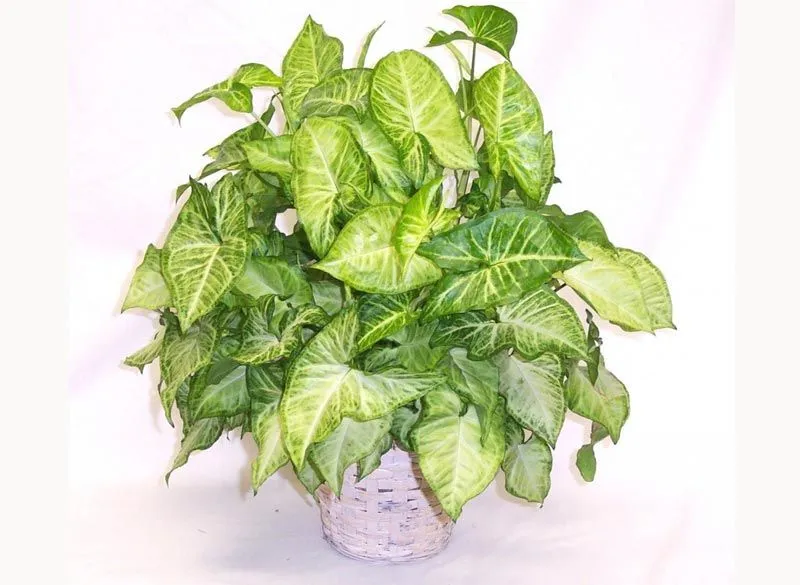
When the Arrowhead Vine is young, it grows as a bushy mound, but as it matures, it starts to vine, making it an excellent choice for hanging baskets or training on a trellis or totem. To keep it looking full and lush, you can pinch back the tips if it starts to become too leggy.
This plant thrives in low to medium indirect light and requires watering only when the soil feels dry to the touch. However, it’s important to note that the Arrowhead Vine is toxic if ingested, so it should be kept away from pets and small children. When fully grown, it can reach up to 36 inches in length, making it a striking addition to your indoor garden.
Moth Orchid (Phalaenopsis)
The Moth Orchid, known scientifically as Phalaenopsis, is another fantastic choice for low-light indoor environments. This plant adds a touch of elegance to any room with its stunning blooms, which can last up to four months. Moth orchids come in a variety of colors and bicolors, offering a wide selection to suit any decor.

Moth orchids are typically available in two sizes: standard varieties that grow 18–24 inches tall and dwarf varieties that remain under 12 inches. They thrive in bark or moss and should be watered only when the growing medium feels dry to the touch.
It’s crucial to avoid overwatering, as more orchids succumb to overwatering than underwatering. Whether you choose a standard or dwarf size, the Moth Orchid is a versatile and striking addition to any indoor space.
Anthurium
Anthuriums are known for their striking flowers in bold shades of red, pink, orange, white, or purple, which offer a vibrant burst of color, especially during the darker days of winter. This tropical plant thrives in bright, indirect light but can also adapt to lower light conditions, although flowering might be reduced in dimmer spaces.

The bright green, heart-shaped leaves of the Anthurium provide a lush backdrop, ensuring that the plant remains attractive even when it’s not in bloom. To keep your anthurium healthy and blooming, it’s important to maintain slightly moist soil at all times.
Avoid letting the soil become overly dry or excessively wet, as the plant prefers a balance between the two. The anthurium can grow up to 2 feet tall, making it a prominent and elegant addition to your indoor space.
Spider Plant
Don’t let the name of this fantastic houseplant scare you off—the Spider Plant, also known as the Airplane Plant, is a charming and resilient addition to any indoor garden. Its name comes from the many runners it produces, each ending in a baby plant that resembles a spider dangling from its web. These “spiderettes” can be left on the plant or removed and planted on their own.
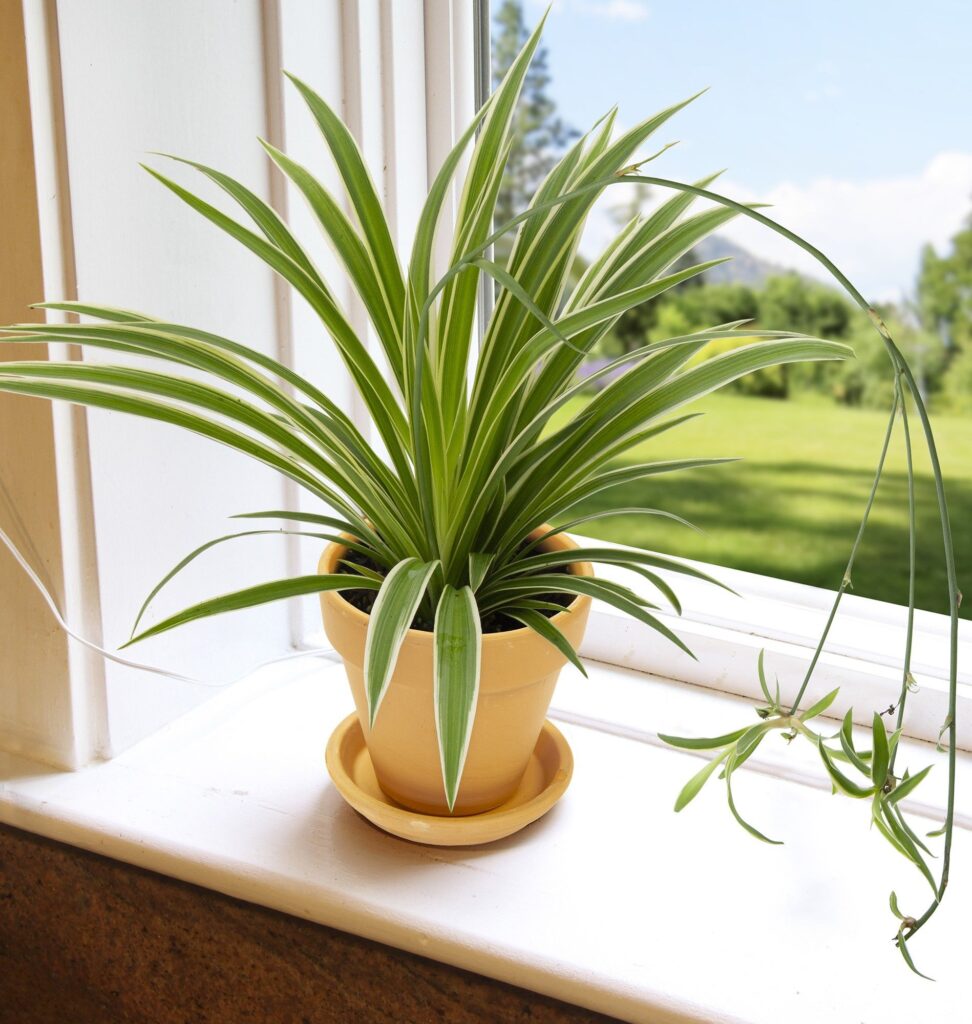
Available in both dark green and variegated forms, the spider plant is ideal for brightening up a tabletop or hanging in a basket. It thrives in low-light conditions, making it perfect for spaces with indirect sunlight.
To keep your spider plant looking its best, water it when the soil feels dry to the touch and mist it regularly during the winter to prevent the leaf tips from turning brown. This hardy plant can grow up to 12 inches tall and is known for its air-purifying qualities, adding both beauty and a breath of fresh air to your home.
Calathea
The Calathea plant is celebrated for its remarkable diversity in leaf forms and vibrant colors, making it a highly sought-after choice for houseplant enthusiasts. This plant thrives in a warm, humid environment, ideally kept at temperatures of 65°F or higher, and prefers bright, indirect light to flourish.
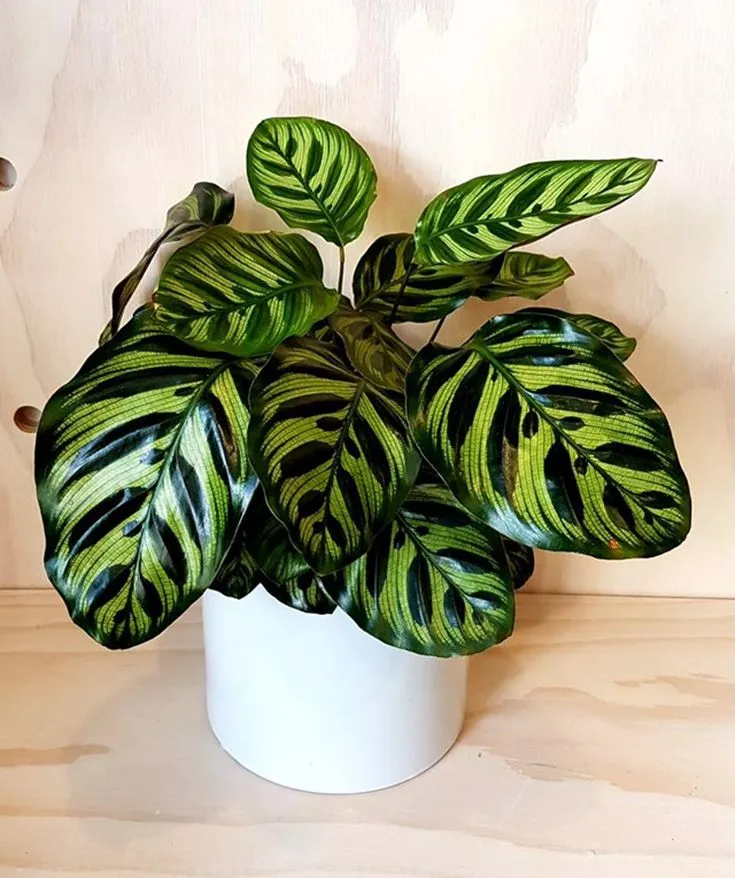
One of the most intriguing characteristics of Calatheas is their ability to fold their leaves at night, a behavior that sometimes causes confusion with prayer plants, which are related but not the same. These dramatic leaf movements add a dynamic element to its appeal. Calatheas require consistently moist soil but are sensitive to overwatering and do not tolerate soggy conditions.
It’s best to water the plant before the soil becomes completely dry to the touch, ensuring a steady level of moisture. With the right care, calatheas can grow up to 3 feet tall, making them a striking addition to any indoor space and bringing both beauty and a touch of the tropics to your home.
Begonia (Rex Begonia)
The jewel-like leaves and vibrant flowers of the Begonia can turn any dim room into a dazzling display of color. Among the many begonia species, the Rex Begonia is particularly well-suited for indoor environments. Renowned for its stunning, multicolor foliage, the Rex Begonia showcases leaves in a captivating range of hues, including silver, green, pink, red, orange, and burgundy.
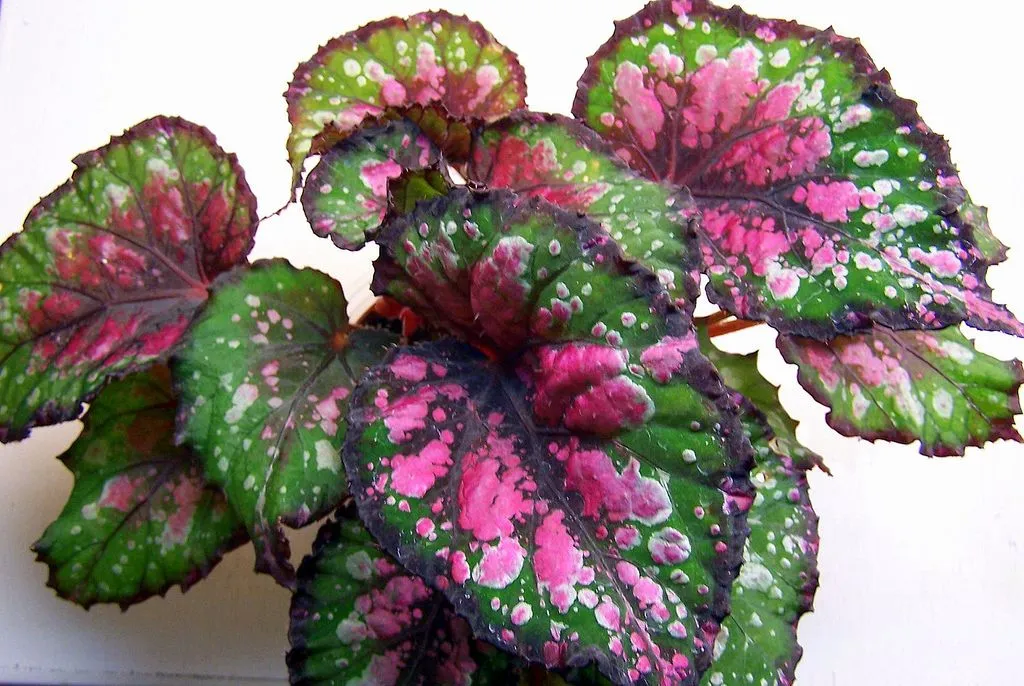
Despite its striking appearance, the Rex Begonia is a compact plant, growing up to only 8 inches tall. This makes it an excellent choice for smaller spaces like terrariums, dish gardens, or as a decorative accent on tables and shelves. To keep your Rex Begonia in top condition, place it in low or indirect light and maintain a slightly moist soil.
Water the plant just before the soil becomes dry to the touch, ensuring you avoid overwatering, which can lead to root rot. With its eye-catching foliage and manageable size, the Rex Begonia can effortlessly enhance any indoor setting, turning a dark corner into a vibrant oasis of color.
Ponytail Palm
The Ponytail Palm is an exceptionally resilient plant that thrives in virtually any room of your home, making it a perfect choice for both novice and seasoned plant enthusiasts. Known for its unique and striking appearance, it features long, strap-like leaves that sprout from a large, bulbous base, which has earned it the nickname “Elephant’s Foot Palm.”

This distinctive base acts as a water reservoir, allowing the Ponytail Palm to survive extended periods without watering—ideal for those who travel frequently or have a busy lifestyle. Available in a range of sizes, from small tabletop versions to larger, tree-sized specimens, the Ponytail Palm prefers bright light but can tolerate low-light conditions. It should be watered only when the soil is dry to the touch. The plant can grow up to 6 feet tall, making it a stunning and low-maintenance addition to any indoor space.
Money Tree
The Money Tree is a highly adaptable and appealing indoor plant, celebrated for its unique appearance and reputed ability to attract good fortune. Known for its preference for high humidity, it thrives in a variety of indoor conditions, provided the environment is kept at 65°F or warmer.

One of the distinguishing features of the money tree is its trunk, which may be braided in traditional styles believed to capture and retain positive energy. Regardless of its trunk’s style, the Money Tree stands out with its lush, glossy leaves and can make a significant impact in any room.
It does well in medium to bright indirect light, which helps it maintain its vibrant foliage. Watering should be done when the soil feels dry to the touch, ensuring it doesn’t sit in excess moisture. With attentive care, the Money Tree can grow up to 8 feet tall, offering a commanding presence and enhancing the aesthetic of your indoor space with its elegant and fortuitous charm.
Yucca
When you think of Yucca plants, you might picture them thriving in sunny desert landscapes, but the spineless Yucca adapts beautifully to indoor environments as well. This plant can do remarkably well in a dim corner of your home, offering a touch of desert charm with its leathery, lance-shaped foliage and distinctive tan bark.
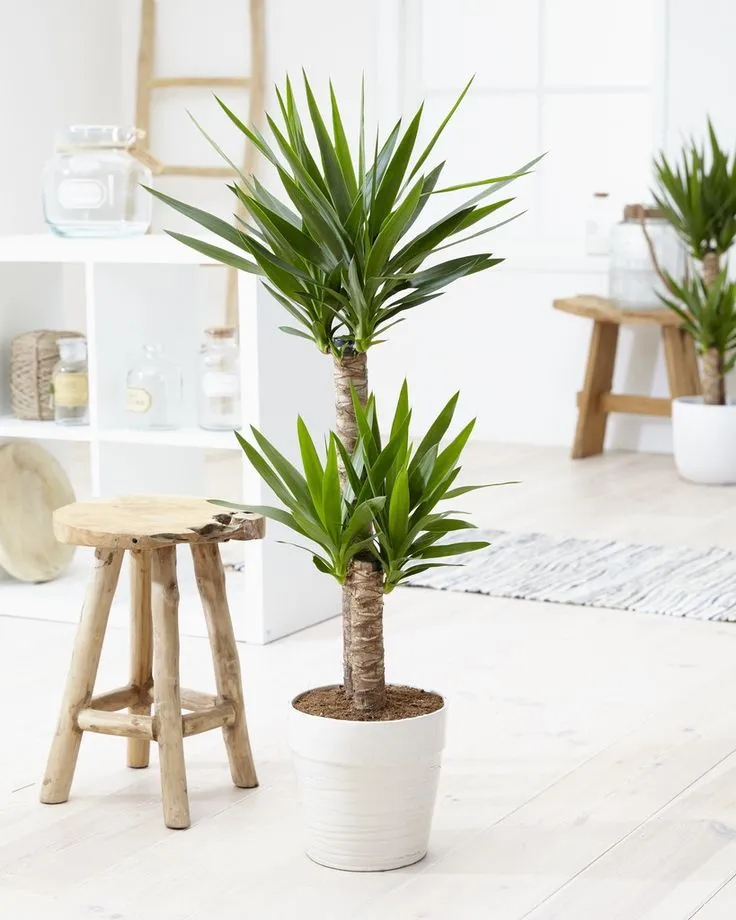
While the Spineless Yucca will grow more slowly in low light compared to a bright, sunny spot, it remains a resilient choice for interior decor. To ensure it thrives, provide it with low to bright indirect light and water it only when the soil feels dry to the touch, avoiding overwatering to prevent root rot. Indoors, this Yucca can reach up to 8 feet tall, making it a striking and architectural addition to your living space, adding both texture and a touch of natural elegance.
Staghorn Fern
The Staghorn Fern is a unique and striking plant that brings a touch of the tropics to indoor environments with its antler-like foliage. Unlike conventional plants, it doesn’t grow in soil; instead, it is typically mounted on a board and hung on the wall, resembling an air plant in its growing habits.
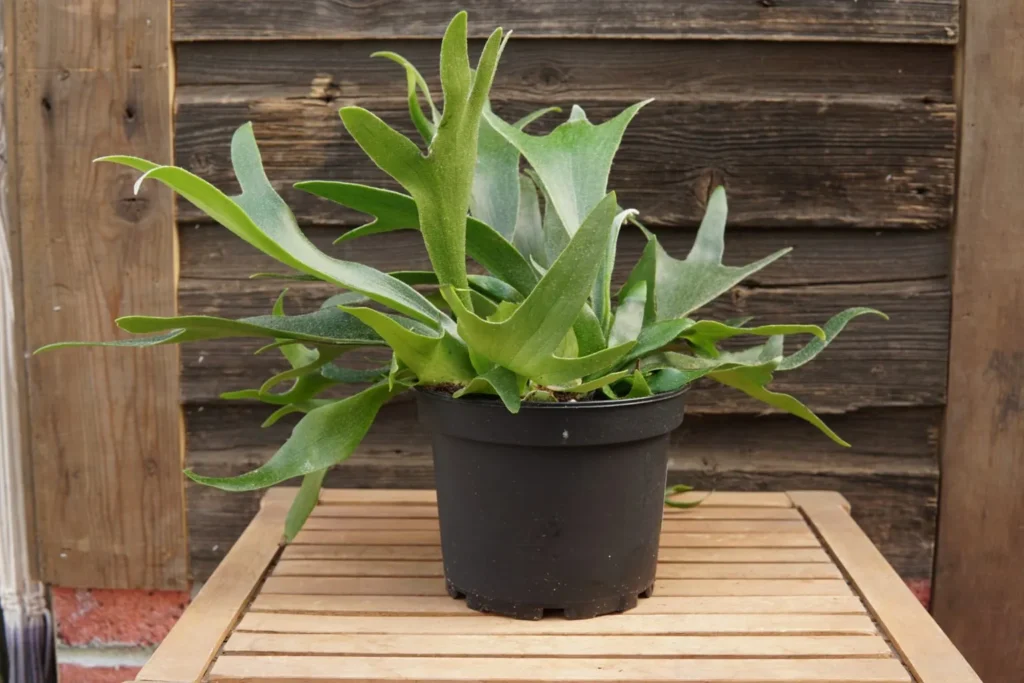
This epiphytic fern thrives in medium-to-bright indirect light, where it can develop its impressive, feathery fronds. To keep the Staghorn Fern healthy, mist it daily to maintain adequate humidity or soak it in water once a week. It prefers a high-humidity setting, which mimics its natural rainforest habitat. When well cared for, this fern can grow up to 3 feet tall and wide, making it a dramatic and low-maintenance addition to any indoor space, adding both beauty and a sense of exotic allure.
Peperomia
Peperomia is an excellent choice for terrariums or dish gardens, known for its compact size and diverse aesthetic appeal. Growing to a height of just 4–10 inches, it remains relatively small, making it perfect for limited spaces. This plant stands out with its wide array of leaf shapes and colors, providing a touch of elegance and variety to any indoor garden.
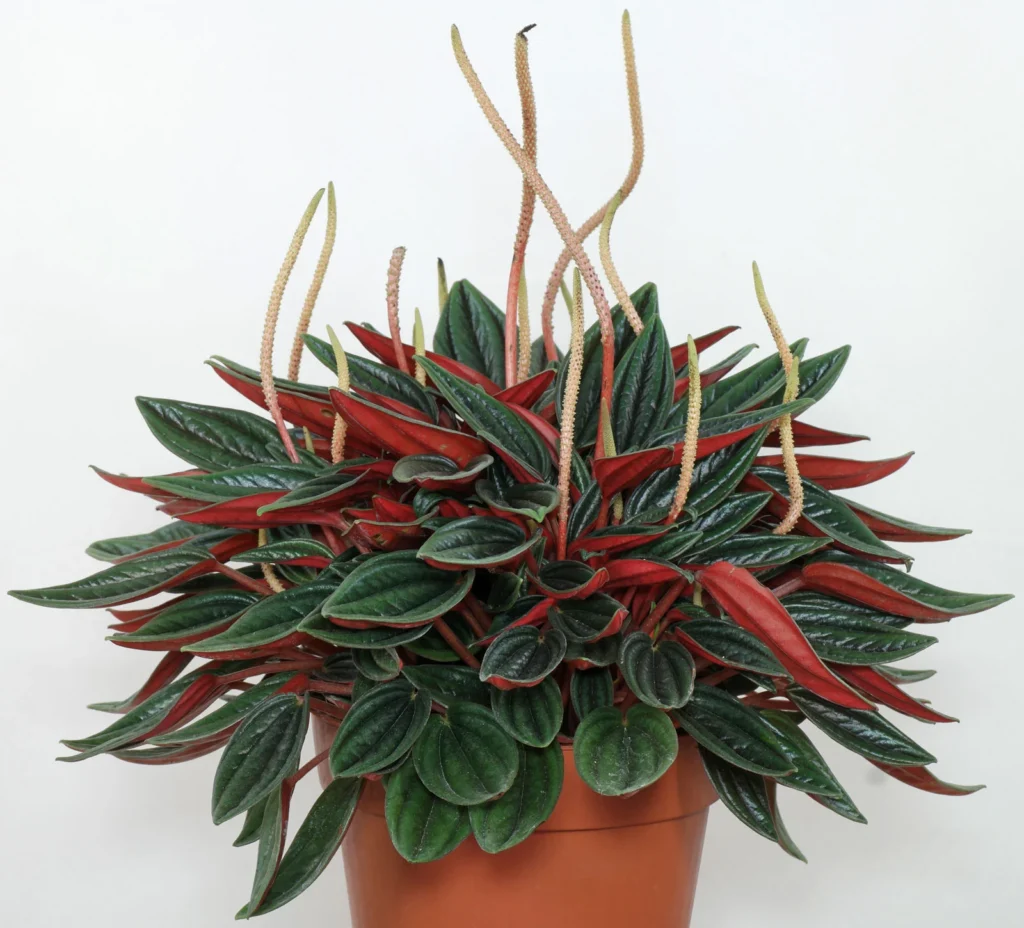
Native to lush rainforests, Peperomia enjoys high humidity, which mimics its natural habitat. It thrives in low or indirect light, making it suitable for indoor environments where other plants might struggle. Peperomia is a resilient plant with few issues related to pests or diseases, enhancing its low-maintenance appeal. To maintain its health, simply water it when the soil feels dry to the touch, ensuring a balance that supports its growth while preventing overwatering.
Janet Craig Dracaena
Dracaena deremensis ‘Janet Craig’ is a robust and adaptable houseplant that excels in a variety of conditions, making it an ideal choice for both novice and experienced plant owners. This particular species of Dracaena is known for its ability to thrive in low light and low humidity, and it can handle the effects of air conditioning and irregular care.

The plant features glossy green, arching leaves that bring a touch of vibrancy to the darker corners of any room. It requires minimal watering, with a preference for soil that is allowed to dry out before the next watering to avoid soggy conditions.
As it matures, ‘Janet Craig’ develops a distinctive cane-like stem topped with a lush cluster of leaves. With proper care, this plant can grow up to 8 feet tall, making it a striking and low-maintenance addition to any indoor space.
Schefflera
Schefflera is a beloved low-maintenance houseplant that has remained a staple in homes and offices for many years due to its adaptability and ease of care. This versatile plant thrives in bright, indirect light but can also grow in medium light, though at a slower pace.
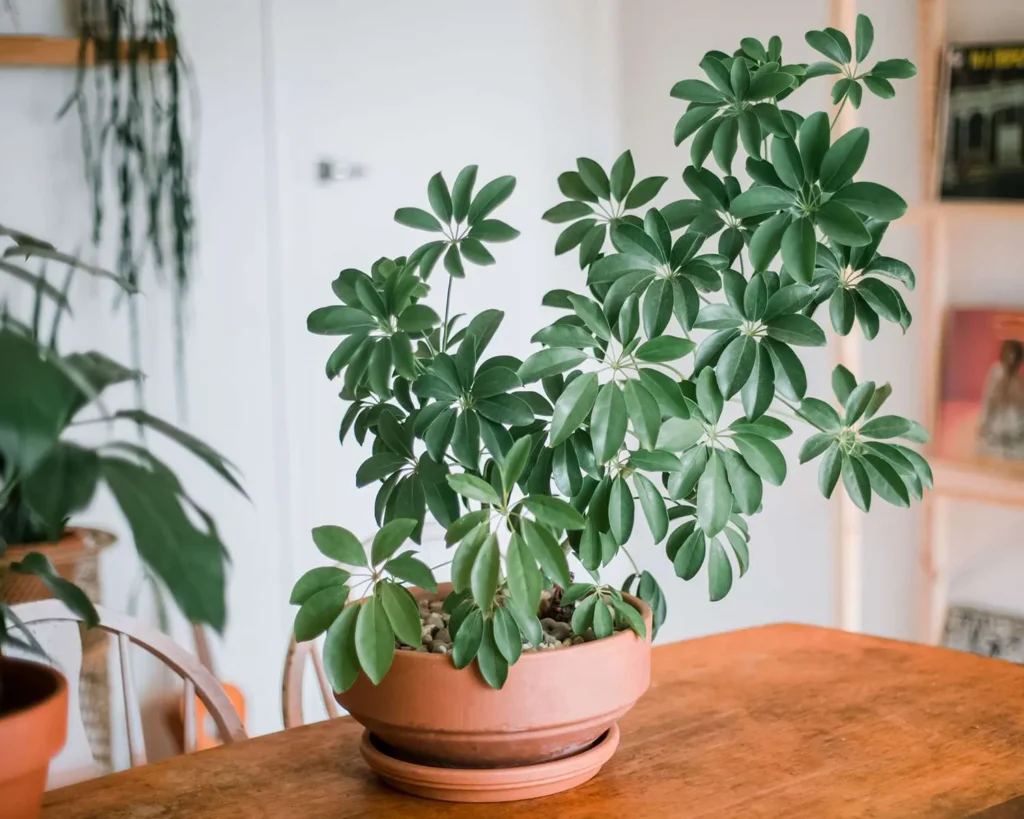
It is important to keep Schefflera away from cool breezes and air conditioning vents, as it does not tolerate sudden temperature changes or drafts. While it can handle some direct sunlight, it generally prefers filtered light. In the summer, Schefflera can be moved outdoors to enjoy the warmth and natural light, thriving in this environment.
For optimal growth, water the plant only when the soil is dry to the touch, preventing overwatering and ensuring a healthy root system. With the right conditions, Schefflera can grow impressively tall, reaching up to 10 feet, making it a dramatic and lush addition to any indoor space.
Hoya (Wax Plant)
The Hoya, commonly known as the Wax Plant, is a captivating, slow-growing vine that adapts well to a range of lighting conditions. It flourishes in bright, indirect light but is also quite tolerant of lower-light environments. The plant features a variety of leaf forms, from flat and smooth to crinkled, and can produce clusters of highly fragrant white flowers, adding a delightful fragrance to its surroundings.
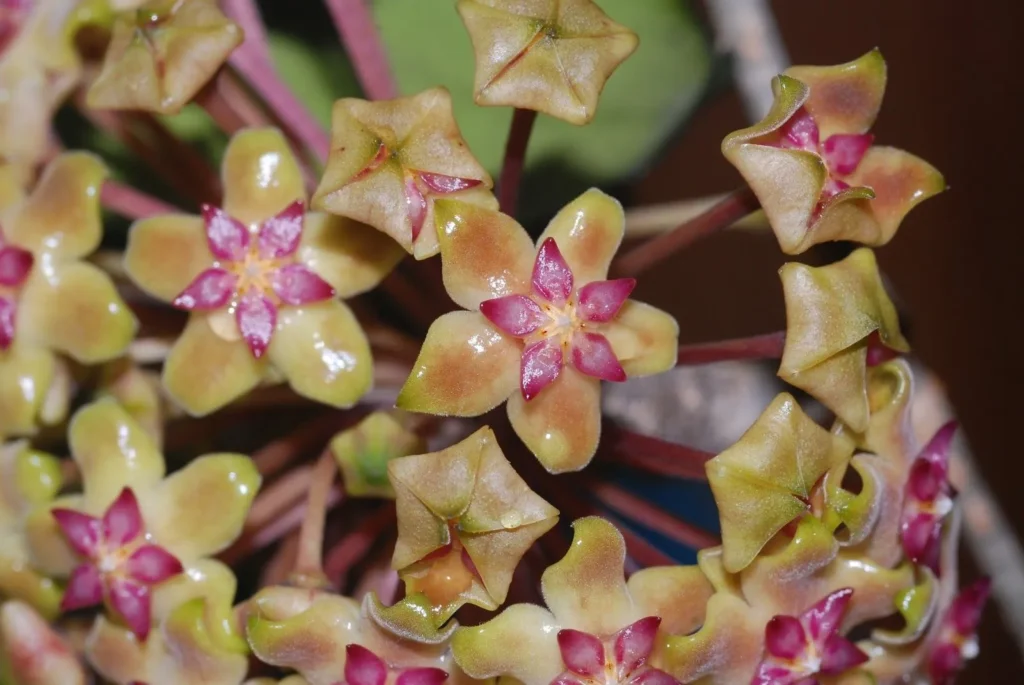
The flat-leaved varieties are available in both solid green and variegated cream-and-green hues. Hoyas are versatile in their growth habits; they can be trained to climb up a trellis or totem, or they can be allowed to cascade elegantly over the edge of a pot or urn. This plant can reach trailing lengths of up to 4 feet, making it a stunning addition to any space. For optimal care, water the Hoya only when the soil feels dry to the touch, ensuring that it remains healthy and vibrant.
Ficus Tree
The Ficus tree is a tropical plant that thrives best in indoor environments where daytime temperatures hover around 75°F and nighttime temperatures are cooler, around 65°F. It enjoys higher humidity levels, so if the air in your home is dry, consider misting the tree daily or using a plant humidifier to create a more favorable environment.
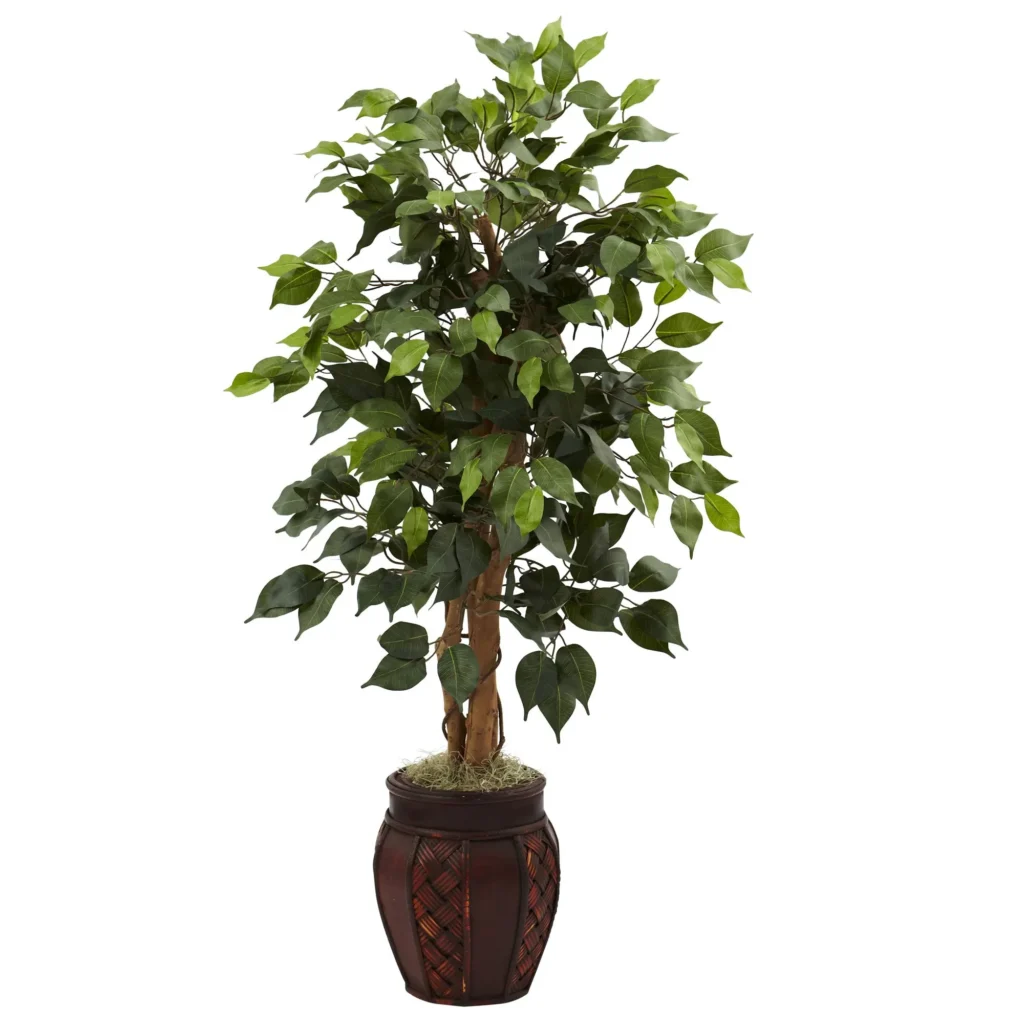
While it can reach impressive heights of up to 60 feet in its natural outdoor habitat, a Ficus tree grown indoors is more manageable, typically reaching 6 to 8 feet tall.
The size of the container and regular winter pruning help to maintain its houseplant proportions, allowing it to fit well in indoor spaces. It thrives in bright, indirect light and should be watered before the soil dries out completely, ensuring it remains hydrated but not waterlogged. With its glossy foliage and adaptable nature, the Ficus tree makes an elegant and manageable addition to any home.
Fittonia (Nerve Plant)
Finally, the Fittonia, commonly known as the Nerve Plant, is a delightful and compact plant that brings a touch of vibrant beauty to any space, whether it’s nestled in a terrarium or showcased in a pot. Its allure is in its intricately veined leaves and a variety of lively color combinations, which predominantly feature striking shades of pink, red, and green.
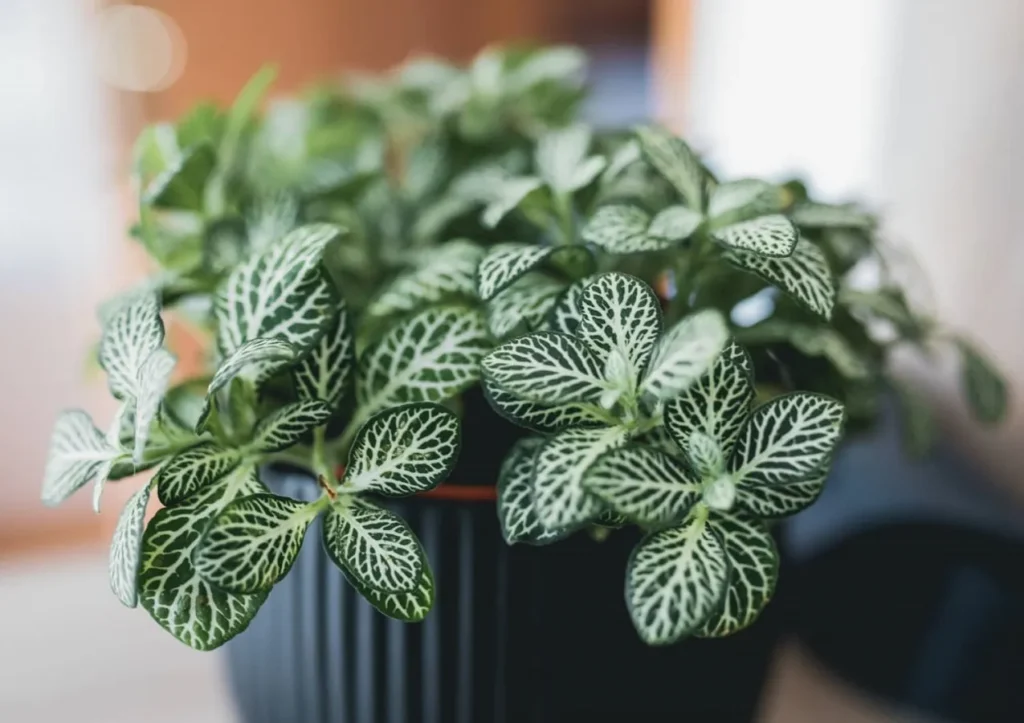
These eye-catching patterns and hues make Fittonia an ideal choice for brightening up smaller areas and adding a splash of color and texture to your decor. Fittonia thrives in bright, indirect light, which helps it maintain its vivid colors and detailed leaf patterns.
It’s important to water the plant just before the soil becomes dry to the touch, as it prefers consistent moisture but can be sensitive to overwatering. Despite its small size, growing up to only 6 inches tall, Fittonia makes a significant impact in any indoor setting. Its compact nature makes it perfect for adding a touch of charm to desks, shelves, or small plant displays, making it a treasured addition to any plant enthusiast’s collection.
Conclusion
Low-light indoor plants are perfect for those looking to bring nature into spaces that don’t get much sunlight. From the elegant Moth Orchid to the resilient Spider Plant, there’s a variety of plants that can thrive even in the dimmest corners of your home.
Whether you’re an experienced gardener or a beginner, these 16 plants will add life, color, and a touch of nature to your living space.

